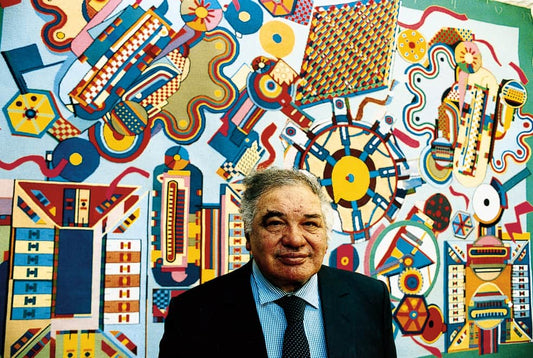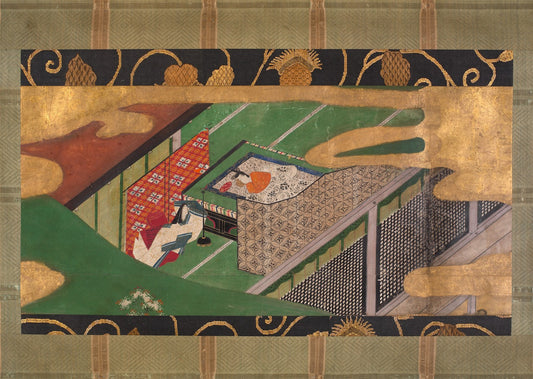Feature image: Edward Hopper, Nighthawks, 1942 via Edward Hopper Art Institute
Isolation is when someone completely separates themselves from a group of people socially. Everyone isolates themselves for different reasons. However, the people who are notorious for isolating themselves are artists. During the eighteenth and nineteenth centuries, artists such as Pablo Picasso, Edvard Munch, Vincent Van Gogh, and Edward Hopper isolated themselves to create their art. Therefore, from their isolation, they all painted an individual as physically alone with their emotions. Their artwork's themes vary between anxiety, grief, happiness, and loneliness. The artists produced their own interpretation of isolation from their own experiences. This article will analyze four paintings by the following artists and their understanding of how isolation is part of the human condition.
Edvard Munch, The Scream, 1893

To begin, in 1893, Edvard Munch painted The Scream. To this day, his painting is famous for the distinct image of a man screaming while covering his ears. Eerie and haunting, the subject matter of Munch's painting addresses mental health and expressionism. The main theme of The Scream is anxiety because the man in the painting is experiencing a panic attack. He has isolated himself on a bridge to endure and cope with his panic attack. Yet, the two people at the far end of the bridge do not hear or acknowledge him. Apart from the isolation and mental illness depicted, art critics believe the man in the painting is Munch himself. For instance, according to edvardmunch.org, “His painting of a sexless, twisted, fetal-faced creature, with mouth and eyes open wide in a shriek of horror, re-created a vision that had seized him as he walked one evening in his youth with two friends at sunset.” In addition, on britannica.com, the writers commented, “It stemmed from a panic attack that Munch suffered in 1892.” The idea behind Munch’s graphic painting of an individual experiencing a panic attack conveys how the matter wasn’t talked about enough during his time.
Vincent Van Gogh, Bedroom in Arles, 1888

Vincent van Gogh completed the Bedroom in Arles in 1888. Surprisingly, he does not focus on a single person. Rather, his painting depicts a yellow room with a bed inside. Van Gogh stayed in this room while living in Arles, France. At the time, Van Gogh had opened an art school known as The Yellow House, where he worked before he developed a severe mental illness. During this time, Van Gogh felt no grief, sorrow, or loneliness while living in this room alone. He was full of pure happiness in his own room, and of the painting he completed of it. For instance, the Van Gogh Museum wrote that van Gogh “had deliberately ‘flattened’ the interior and left out the shadows so that his picture would resemble a Japanese print. Van Gogh was very pleased with the painting: ‘When I saw my canvases again after my illness, what seemed to me the best was the bedroom.’” Bedroom in Arles reveals a time when Van Gogh was happy. He was pleased with his painting and eager to continue his career as an artist. He was hopeful and proud.
Pablo Picasso, Melancholy Woman, 1902

In 1902, Picasso painted Melancholy Woman while he was living in Barcelona, Spain. His painting depicts a lone woman in blue, part of his “famed Blue Paintings.” Interestingly, the different shades of blue on the woman represent Picasso’s own melancholy mood. According to Atriona Saliba, Picasso’s friend Carles Casagemas had killed himself. Following Casagemas’s death, “Picasso saw the world in shades of deep, intense blue.” When Picasso painted Melancholy Woman, “He would go on to project his feelings onto paintings like Melancholy Woman and The Life. The woman in Melancholy Woman has folded into herself so many times it seems she’s lost her arms and legs, a closed-off pose that represents Picasso’s own feelings of loss. Yet, the woman herself appears emotionally distant by staring at a wall aimlessly. She is grieving, just like Picasso. His goal of loneliness in his painting is grief. His subject is grieving, and thus he surrounds her with blue.
Edward Hopper, Morning Sun, 1952

In 1952, Edward Hopper painted a picture of a woman in isolation titled Morning Sun. Like Picasso's painting, Morning Sun is part of Hopper's "Window" series. As an artist, Hopper was an American realist. Thus he, "was one of the early American artists to paint the experience of human isolation in the modern city." The woman, Hopper's subject in the painting, is lost in thought as she sits alone, staring out into the open city. Loneliness is a significant theme in Hopper's paintings, but in Morning Sun, he has a positive outlook on loneliness. He conveys this positive atmosphere with the gleaming sunlight upon the woman and her pastel colors. According to Arnet Writer, Katie White, Hopper's theory was "Personal Form."" White mentions, "For Hopper, the depiction of the world was a projection of his own mind." Thus, he projects his own personal depiction of the world. For example, Hopper practiced his personal forum by using his wife, Jo, as a model for the woman in Morning Sun. He has her facing "the sun impassively and seemingly lost in thought." Morning Sun is considered one of "the ultimate images of summer." The woman staring out in the window is celebrating being isolated with her thoughts in the city.
Isolation is part of the human condition. In isolation, we can experience a wide variety of emotions— we’re happy, grieving, full of anxiety, or proud of something we’ve accomplished. As humans, we like to take a minute to recognize those feelings alone, which is precisely what the artists have depicted in their artwork. Our society often associates isolation with loneliness and sadness when, in fact, isolation does not engender mere melancholy. Instead, these paintings are proof that isolation can be a positive phenomenon. We need to isolate ourselves to process our inner voices, and we can only do that in isolation because there’s no one else’s voice but our own to listen to. For many artists, this solitude allows them the space to produce their most iconic and influential work.
©ArtRKL™️ LLC 2021-2023. All rights reserved. This material may not be published, broadcast, rewritten or redistributed. ArtRKL™️ and its underscore design indicate trademarks of ArtRKL™️ LLC and its subsidiaries.





